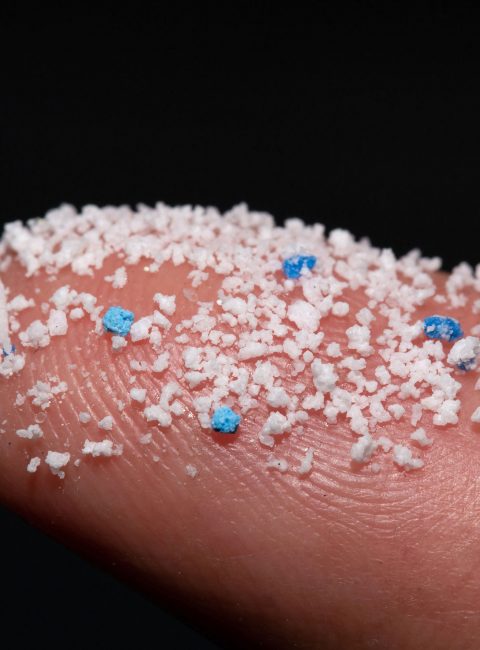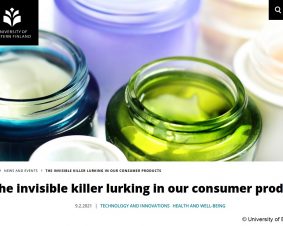 >
Spotlight January 2021: Nanoplastics challenge – How to improve tracking of nanopolystyrene distribution in the environment.
>
Spotlight January 2021: Nanoplastics challenge – How to improve tracking of nanopolystyrene distribution in the environment.
In January, we present a paper published in the Nature Journal communications materials. The article focuses on the development of a new detection method of nanopolystyrene. The method not only makes it possible to detect nanoplastics in the environment for the first time, but also to determine their accumulation in plants and animals.
Nanoplastics, which are added to numerous commercial products or are created by further breaking down microplastics, pose a major threat to our environment. Detection in the environment is difficult for two reasons. First, the small size makes it difficult to detect the particles in the environment. Second, the concentrations are very low. However, tracking nanoparticles is essential to understand potential effects on plants and animals. The team led by Maya Al-Sid-Cheikh has succeeded in improving the detection of nanoplastics by using a special label. To do this, they used a special form of carbon, called 14C, which does not occur naturally. Unlike other labels, e.g. fluorescent dyes, this label cannot be lost, e.g. by fading. By using such 14C-labeled polystyrene particles, the uptake and distribution of nanoplastics in mussels could be tracked for the first time. The 14C-labeled nanopolystyrene could be detected even in very low concentrations, which also allows detection in the environment, e.g. lakes or rivers. The method can be used to better understand the distribution of nanoplastics in the environment and in organisms by means of laboratory experiments. However, it does not allow direct measurement of nanoplastics in the environment because they do not carry the label. As the authors also critically note, it is possible that labeled particles and naturally occurring particles behave differently.
Original publication:
Al-Sid-Cheikh, M., Rowland, S.J., Kaegi, R. et al. Synthesis of 14C-labelled polystyrene nanoplastics for environmental studies. Commun Mater 1, 97 (2020). https://doi.org/10.1038/s43246-020-00097-9

Weitere Spotlights
Spotlight December 2020: Rethinking Nanosafety – Part II
In December we would like to draw attention to the special issue: Rethinking Nanosafety – Part II in small. In the July Spotlight we already presented Part I. This special issue “Rethinking Nanosafety – Part II” also features research papers by renowned scientists in the field of nanosafety research. The first part of this special […]
Read moreSpotlight April 2021: Nanomaterials and Fake News – a commentary based on an example
In February 2021, the article “The invisible killer lurking in our consumer products” appeared, describing nanoparticles as a greater danger than Corona [1]. “The use of nanomaterials” would be “unregulated” and “nanomaterials are so small that they cannot be determined once they are part of a product”. So what is the truth of these statements? […]
Read moreSpotlight February 2022: Probabilistic risk assessment – the keystone for the future of toxicology
The basics of toxicology are constantly being reconsidered, and the approach to risk assessment is therefore constantly being put to the test, because, as William Osler is cited in this publication, “Medicine (toxicology) is a science of uncertainty and an art of probability“. In this recent paper, the team around Thomas Hartung (Johns-Hopkins University/University of […]
Read moreSpotlight June 2021: Endotoxin – the reason for false-positive toxicity testing for advanced materials?
Advanced materials, but also nanomaterials are closely examined to determine whether they trigger biological effects that could be harmful to humans and the environment before they are used in products. This also includes such materials as titanium dioxide, which has been used in a wide variety of products for more than 50 years. A particularly […]
Read more


